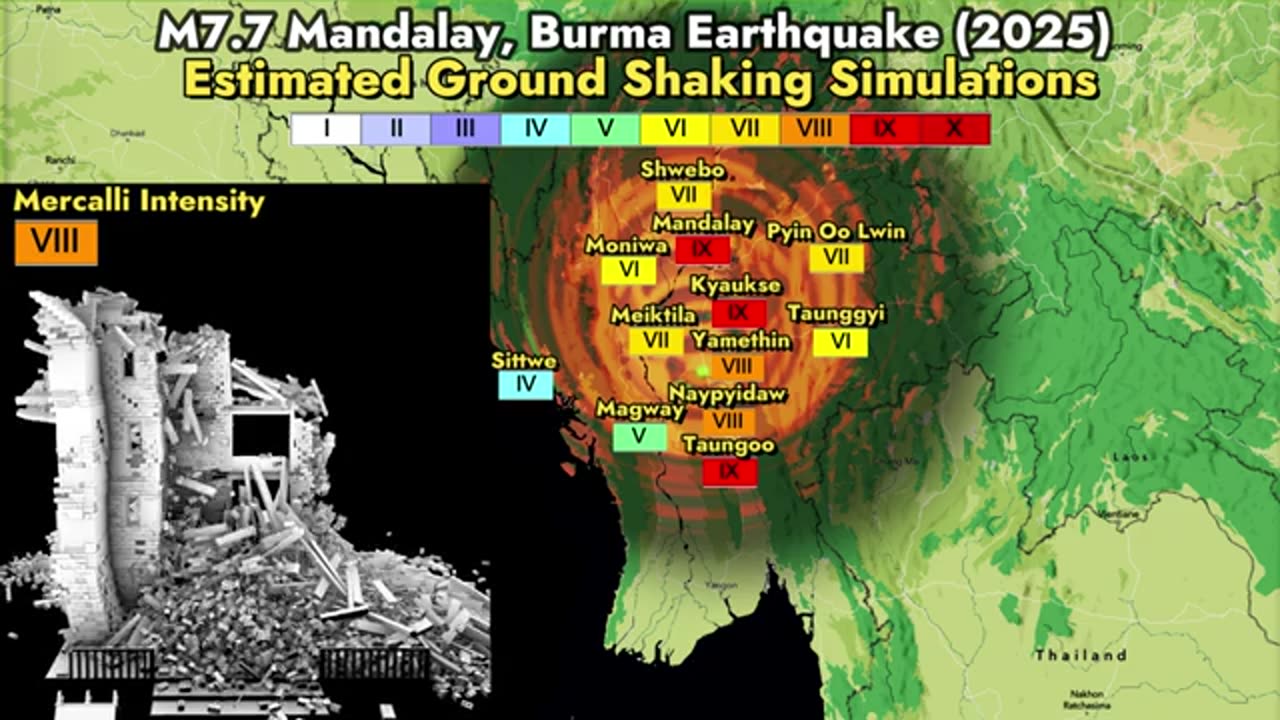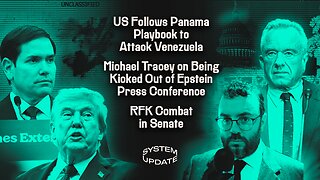Premium Only Content

Myanmar-Thailand Earthquake Damage Simulation: Raising Awareness Through Science and Art
Earthquakes are one of the most unpredictable and devastating natural disasters, causing massive destruction to buildings, infrastructure, and human lives. By using advanced simulation techniques, we can better understand the impact of different seismic activities and work toward constructing safer buildings. Through my earthquake damage simulations, I aim to educate the general public about potential earthquake-related hazards while fostering curiosity about Earth Science.
The Power of Earthquake Simulations
Simulations play a crucial role in disaster preparedness and mitigation. By visually demonstrating how various buildings and structures respond to different shaking intensities, people can gain a deeper appreciation for the importance of earthquake-resistant architecture and engineering. These models not only help scientists and engineers but also serve as a powerful educational tool for the public.
The Myanmar-Thailand Earthquake Zone
The region encompassing Myanmar and Thailand is seismically active due to the movement of the Indian and Eurasian tectonic plates. Historical data reveals several significant earthquakes in this area, causing destruction and loss of life. By simulating earthquake scenarios for this region, we can analyze the vulnerabilities of existing structures and propose better engineering solutions to withstand future seismic events.
Combining Science with Art: "In Terra Pax"
Beyond the scientific aspect, I integrate my piano compositions (available on Spotify and YouTube: @pardonmypiano) into my earthquake simulation videos. This project, titled "In Terra Pax," is a lifelong initiative that aims to provide financial and emotional support to those affected by earthquakes. By merging science and art, I hope to make earthquake awareness more engaging and impactful.
Inspiring Future Generations
One of my primary goals is to inspire the next generation of architects, engineers, and scientists. Understanding earthquake mechanics and structural resilience is essential for designing safer cities. Through my videos and simulations, I hope to encourage young minds to pursue careers in Earth Science and engineering, ultimately contributing to a safer and more resilient world.
A Call for Global Cooperation
Disaster mitigation is a collective responsibility. Engineers, scientists, architects, and policymakers must work together to implement better building codes, improve early warning systems, and educate communities on earthquake preparedness. By fostering international collaboration, we can reduce the devastating impact of earthquakes and build a more resilient society.
My hope is that these simulations will not only educate but also inspire. We all need to work peacefully together to make this world a better place. Through knowledge, awareness, and innovation, we can mitigate earthquake damage and protect future generations from seismic disasters.
-
 LIVE
LIVE
TimcastIRL
1 hour agoTrump DOJ To Ban Trans People From Owning Guns After Catholic School Shooting | Timcast IRL
21,212 watching -
 LIVE
LIVE
Glenn Greenwald
2 hours agoTrump and Rubio Apply Panama Regime Change Playbook to Venezuela; Michael Tracey is Kicked-Out of Epstein Press Conference; RFK Senate Hearing | SYSTEM UPDATE #508
6,843 watching -
 LIVE
LIVE
Rallied
2 hours ago $0.76 earnedWarzone Solo Challenges
292 watching -
 57:40
57:40
MattMorseTV
2 hours ago $2.84 earned🔴Trump just SHATTERED the RECORD.🔴
9.69K35 -
 LIVE
LIVE
Mally_Mouse
1 hour agoThrowback Thursday! Let's Play: Cuphead
93 watching -
 LIVE
LIVE
StevieTLIVE
1 hour agoWarzone HYPE Duos with GloryJean
19 watching -
 1:05:11
1:05:11
Donald Trump Jr.
3 hours agoBuilding the Future with American Bitcoin, Plus Eric's Triggered Debut! | TRIGGERED Ep.272
94.2K52 -
 LIVE
LIVE
MissesMaam
6 hours agoLetting a Game from 2009 RageBait Me | Achievement Hunting PVZ 💚✨
33 watching -
 1:01:40
1:01:40
The Nick DiPaolo Show Channel
5 hours agoTrump Waiting On Tariff Ruling | The Nick Di Paolo Show #1788
22.7K21 -
 LIVE
LIVE
jordobombay
2 hours agoWarzone Update, Massive Day For The Unemployed
18 watching